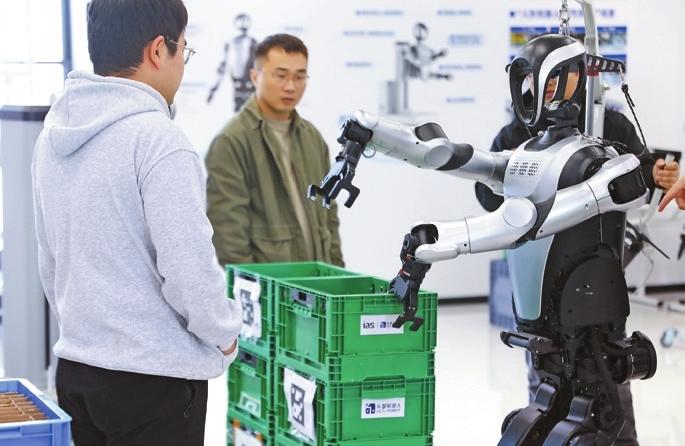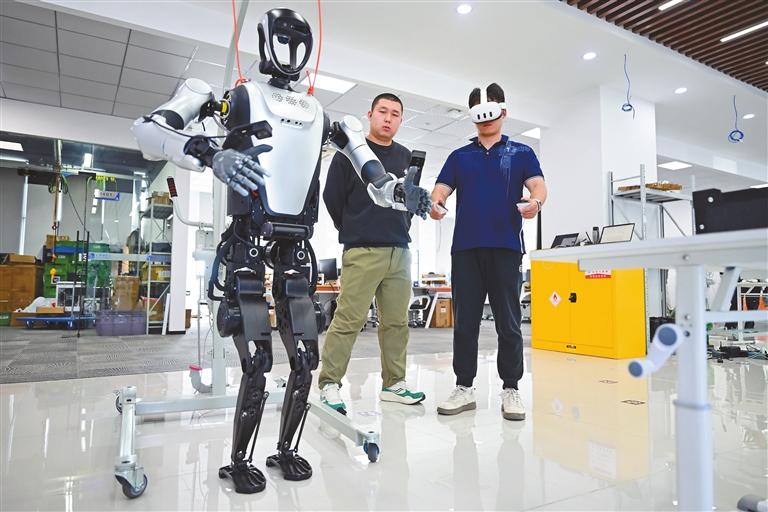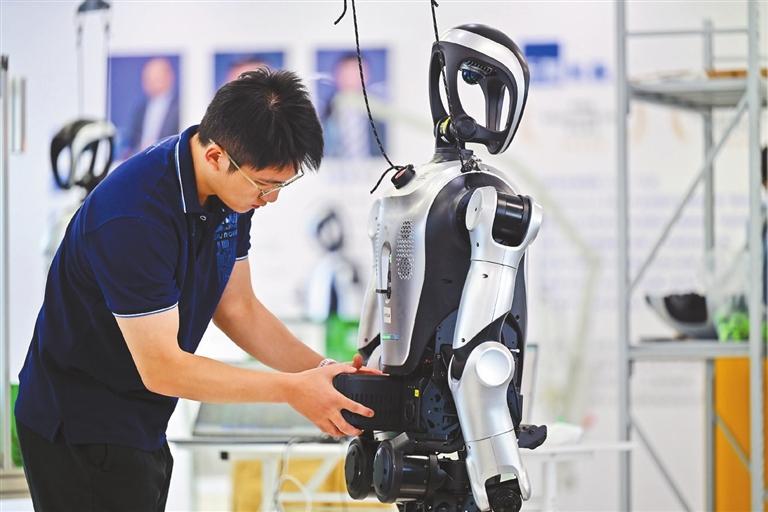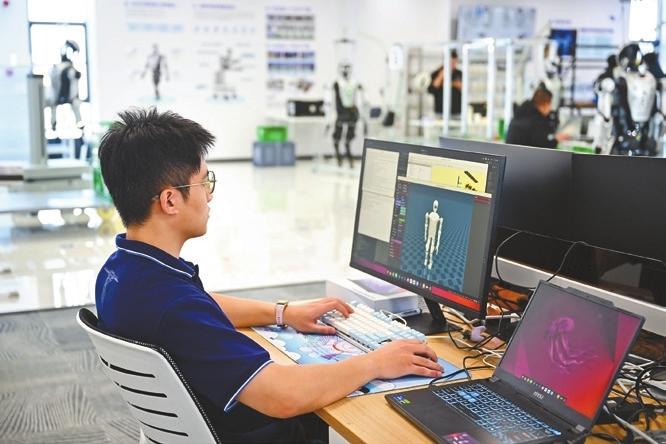
Staff members observe a humanoid robot testing its ability to carry plastic crates.
During the 15th National Games — China's top national sporting event — humanoid robots took center stage. Some struck bronze bells in the opening ceremony, others assisted during award presentations, and one named Kuavo carried the ceremonial torch during the torch relay, drawing awe from millions.

Zhang Hongwei (R) operates a humanoid robot using a VR system for motion capture under the guidance of a colleague at Leju Robot's R&D headquarters in Hefei, on Oct. 24. Photos by Xinhua

Zhang Hongwei installs a battery into a humanoid robot at Leju Robot's R&D headquarters in Hefei, on Oct. 24.
Behind these headline moments is a growing field of engineers shaping robots for more than just show. Among them is 26-year-old Zhang Hongwei, a robot application engineer at Leju Robot's R&D headquarters in Hefei, Anhui Province.

Zhang Hongwei deploys code to simulation software for robot training.
Zhang is now training Kuavo for industrial work — tasks like sorting, lifting, and navigating real factory floors. He translates client needs into code, tests them in virtual simulations, then fine-tunes Kuavo's performance in physical trials.

Zhang Hongwei monitors a robot as it grasps parts in the testing area at Leju Robot's R&D headquarters in Hefei.
"Robots like Kuavo are already being deployed in some factories," Zhang says. "But real-world environments are complex. Each issue we solve brings them closer to broader adoption."
As China invests in intelligent robotics, the spotlight may shine on machines — but the real innovation lies with people like Zhang, quietly building the future one line of code at a time.
















